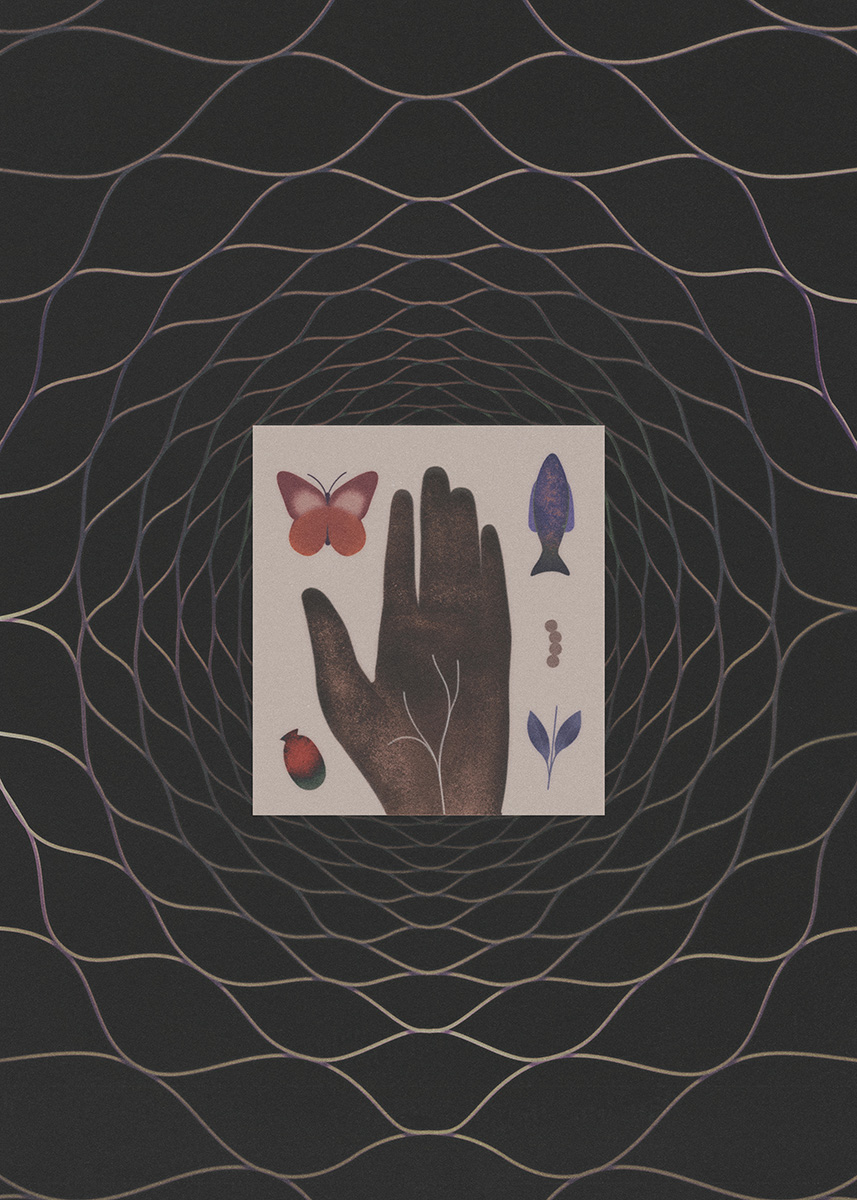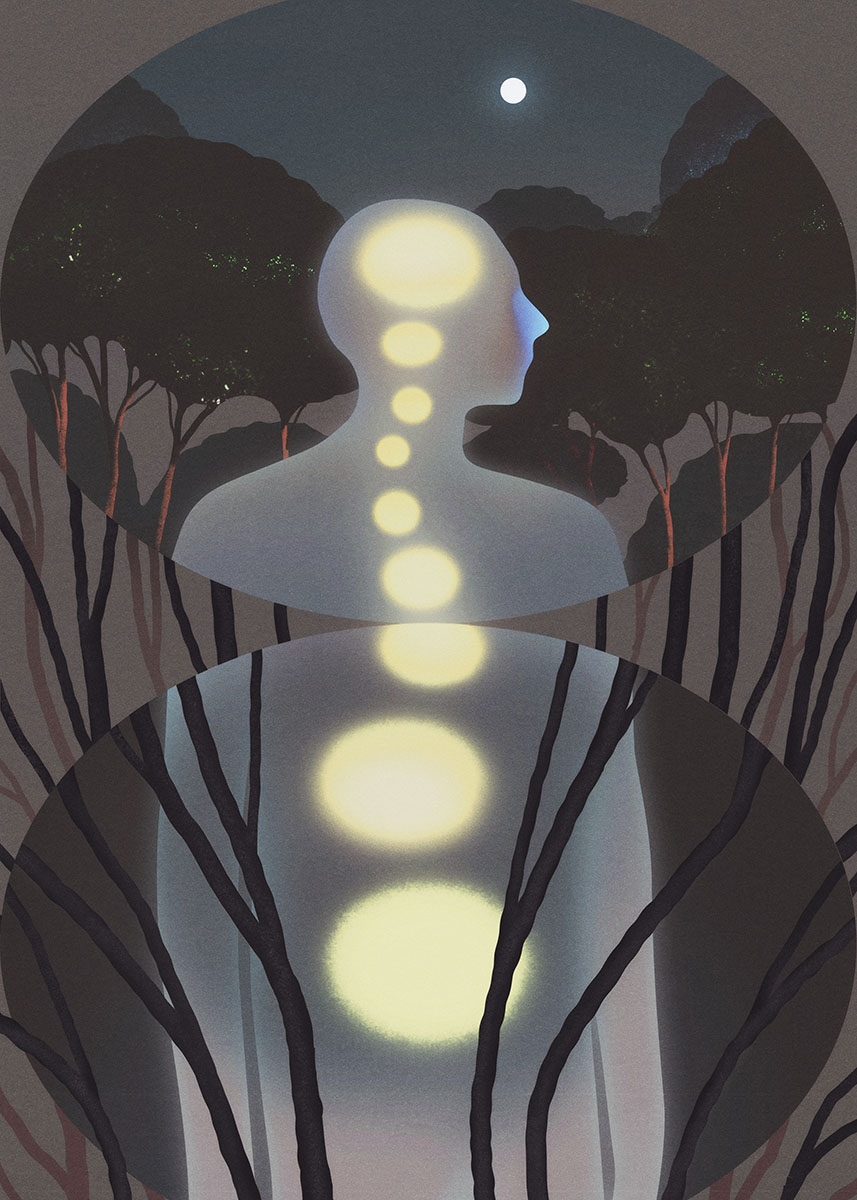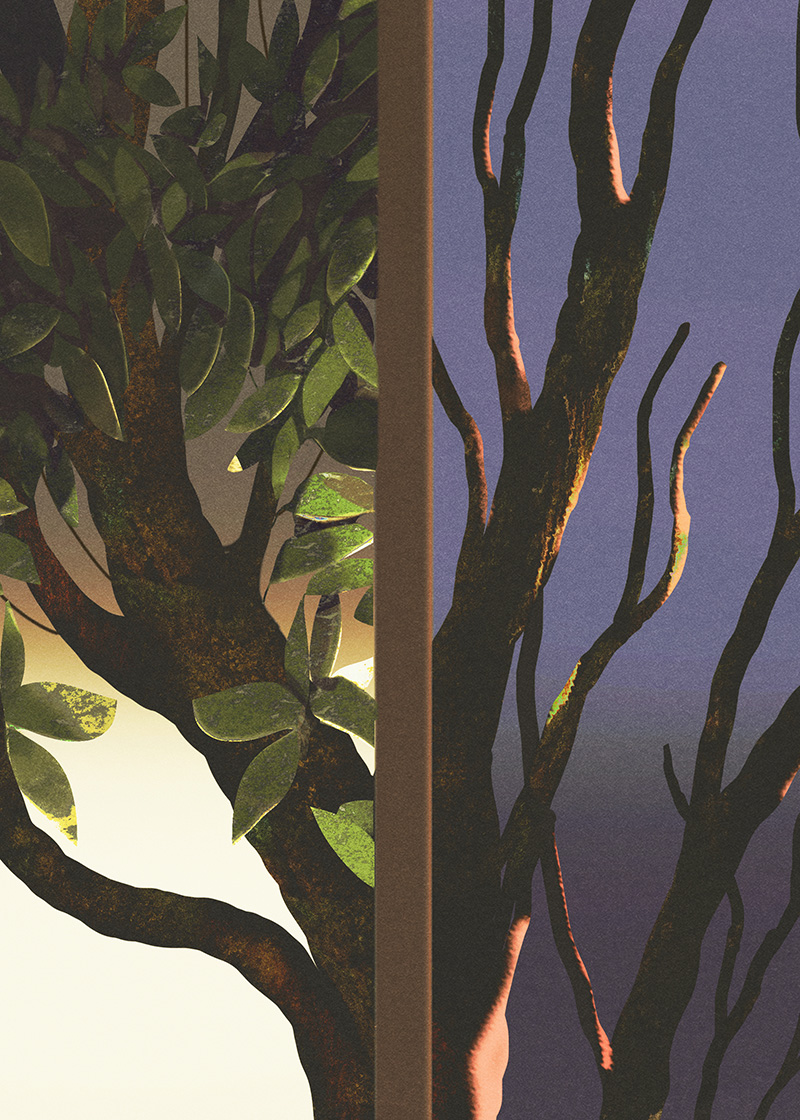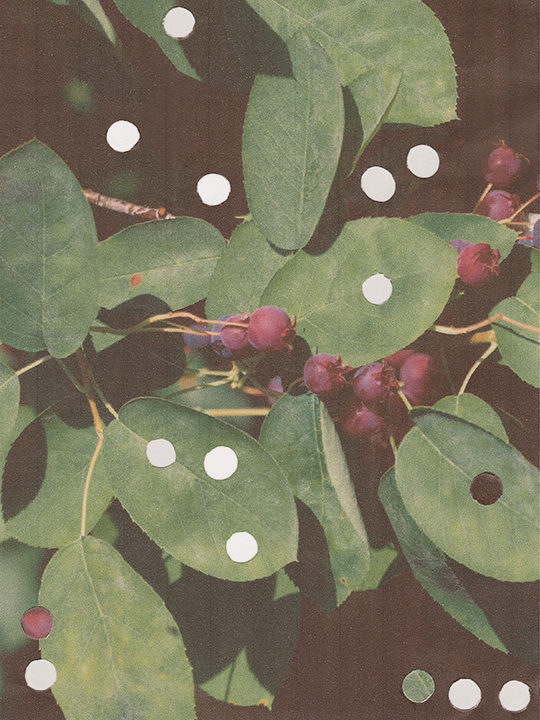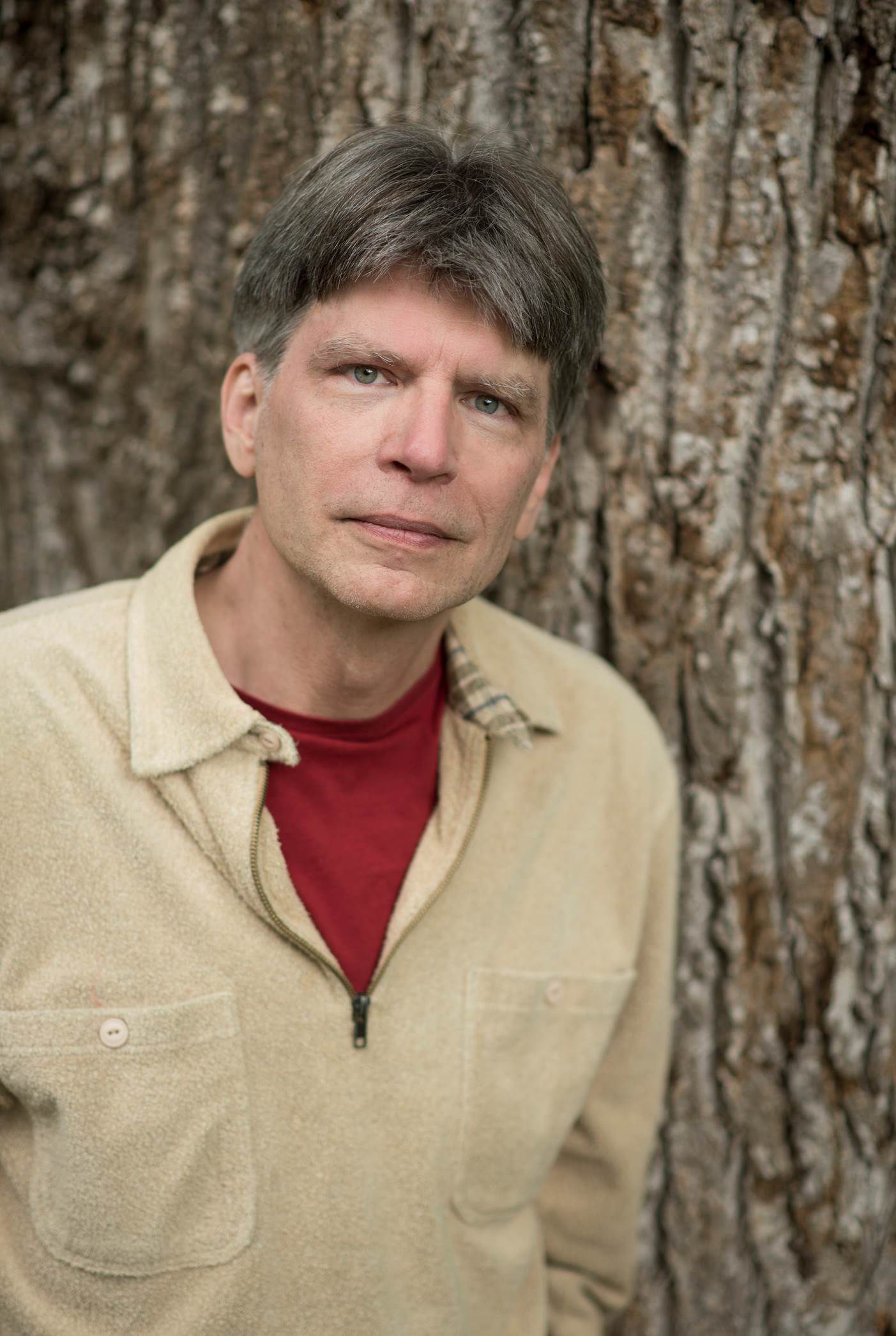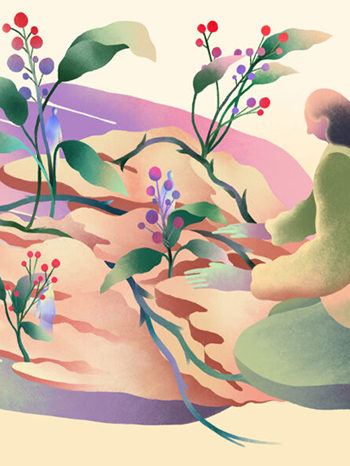
Robin Wall Kimmerer is a mother, scientist, professor, and enrolled member of the Citizen Potawatomi Nation. She is the author of Braiding Sweetgrass: Indigenous Wisdom, Scientific Knowledge and the Teachings of Plants and The Serviceberry: Abundance and Reciprocity in the Natural World. Robin is a MacArthur Fellow and was awarded the National Humanities Medal. She lives in Syracuse, New York, where she is a SUNY Distinguished Teaching Professor of Environmental Biology and the founder and director of the Center for Native Peoples and the Environment.
Ibrahim Rayintakath is an illustrator and art director based in India. His editorial illustrations have appeared in The New Yorker, The New York Times, Wired, NPR, and elsewhere. He lives and works in Ponnani, a small coastal town facing the Arabian Sea.
Wandering among the ancient decomposing cedar trees of the Andrews Experimental Forest in Oregon, Potawatomi botanist and author Robin Wall Kimmerer wonders what they might teach us about the nature of our own afterlife.
JUST BEFORE MY TURN to the research forest, I pass a little church beneath a circle of spruce, with a line of cars in a parking lot that is more dirt than gravel. Out front, block letters on the white worship sign spell out
Blue River Gospel Church
“In heaven we are released from death”
Bible Study 7 pm
Around the coffee urn inside, I imagine, Pastor Ford and a dozen or so parishioners are deep in conversation. “You see,” he says, “none of us can know for sure what heaven will be like, but we are promised that in heaven there is no time. When death is conquered, time just stops and turns to life everlasting.” Old Edna Crosby raises her hand next. “Pastor, when we rise to heaven, what body do you suppose we will be in. This old thing here, or maybe whatever age we want?” The others smile. “Would Roger still recognize me?” Pastor Ford takes her veined old hand between his own. “Oh, Roger will know you all right. When we leave our earthly body, we are transformed.”
Just down the highway, at the Andrews Experimental Forest, a cadre of scientists are wondering the same thing.
Trees fall. We know that. But we don’t expect to be there, to stand beneath with open mouth to see the lean begin. Down it comes like a slow-motion hammer stroke. In a rush of swooshing branches, the tunnel of darkness closes in and the roar settles to silence. Such peace. I have stumbled into someone else’s heaven: the afterlife of cedars, the paradise of firs.
So, this is what it’s like to pass through that door, across the threshold of being. The pearly gates are framed by moss-draped firs. I am surrounded by the pillars of ancient trunks backlit by overwhelming radiance. I listen to celestial harps and hear thrushes singing and the music of a distant brook. I see no angels but the moss is a pillow of green cloud.
If I gave it any thought at all, I assumed there was a bright line between the living and the dead, a boundary we cross but twice, once on our way into life and once on our way out. But here the line is blurred. In the afterlife of cedars, nothing is ever dead.
Raindrops glisten from the branch tips and like tiny prisms scatter rainbows through the air. I walk through gardens of forms unknown to flowers, the flora of the dead. Fingers of golden yellow, wrinkled blue toadstools, and fairy rings of translucent gray, a host of flared goblets the color of pumpkins, spiky coral fungi, dabs of jelly fungus, tawny boletes, fluted white bowls of chanterelles, and tiny red cups splattered like blood drops on the moss.
All around me lie waist-high logs draped by blankets of moss. They lie in neat cemetery rows, biers uniform in shape and size. It is as if a great hand had laid them gently on the beds of moss and garnished them with clumps of funeral parlor ferns. They are surrounded by their towering kin, looking glumly down at their fallen relatives in repose.
They say that at the threshold, when life veers toward death, that the story of one’s life unfolds before one’s eyes. The human brain stores memory we do not fully understand, but the memory of trees is clear. The whole history of each tree is written in the rings. Where the trunk has snapped on the fallen fir, the break is clean and sharp. My thumbnail moves from ridge to ridge, counting off the seasons. Here a wide ring when rains were plentiful, and then three more to mark the years of drought. This distorted black wave is a memory of fire, the thin red band—a year of bark beetles. Fires, windstorms, times of plenty, and times of poor are written here, from the wide rings of youth to the slowing growth of old age.
Does the tree hold some memory of the bear that slept beneath it? It does. Not in a visible ring, but in the body of the cells. Every exhalation of that bear, or the chattering squirrel—or the kneeling scientist with a clipboard—released carbon dioxide into the misty air. Which was absorbed by the open stomates of the fir needle, where it became a building block for the cells my fingers run across.
The log itself is breathing. The carbon dioxide emanating from the microbes in the log is almost instantly absorbed by the pellucid leaves of mosses, who are interlaced with fungi that only moments ago exhaled that same carbon from the log. It’s a dizzying circle of inhale and exhale, reciprocity between living and dead.
The very air vibrates with its intake and exhale. There is a deeper sound, a certain hum beneath the silence. I’ve heard that the planet makes a sound, a vibrating chord in C♯ minor. Could it be the hum of life being made and unmade, composed and decomposed? If we listen very hard, can we hear the soaring sunlit chords of photosynthesis, the countermelody of decay? The quiet is so intense, it is as if I can hear the small suck of carbon dioxide entering a leaf, the prick as a fungal strand breaks through the wall of cedar tracheid.
As inert as the logs seem, there is a ferment of activity inside, like dreams moving inside the head of a sleeper. Fungal mycelia follow the shape of neurons and burrowing beetles unearth memory. It’s invisible from the outside, but as a visitor to the afterlife of cedars, I can easily see inside.
Fungi are not alone in their feasting upon logs. Bark beetles, grubs, and carpenter ants riddle the log and open it up to others all too eager to colonize. Bacteria, algae, mites, and spiders—whole food webs develop within the weakening log. When the tree was alive, most all of the cells in the trunk of the tree were dead. They were just empty tubes designed to hold up the tree and to transport water. But now that the tree is dead, it is more alive than ever before. Chipmunks, skunks, and slugs live within. Moss drapes the outside like a shaggy green afghan and ferns sprout from the ends. What was once dead tissue is now a garden, on its way to becoming soil.
Through the misty woods a figure approaches, a slender, gray-haired man in khaki pants and work boots with many miles upon them and an auger in his hand. I’m not surprised at all. This is a man you’d meet in heaven.
The felicitously named Dr. Francis D. Hole was a soils professor at the University of Wisconsin. We were not allowed to use the word “dirt” in his class. Filth had nothing in common with soil so clean and nourishing you could eat it.
“Do you feel that?” he asked, bouncing a little on his toes. “That sponginess underfoot? The humus here is extraordinary—millennia of decay. Imagine the rain of organic matter; needles, spores, twigs, and bugs building the soil from the top down. Photosynthesis—now isn’t that a pure wonder, how light and air can end up as soil?” He liked to remind us that the genus Homo is derived from the Latin word for “humus” and for “humility.” He was a humble man, a man of the soil who signed his name not with PhD appended, but as Francis D. Hole, TNS. It always drew the question.
Dr. Hole passed away many years ago, but a field trip to tree heaven would be heaven for him as well. Field trips with him were legendary, as he introduced us to the art and science of soil horizons, to hardpans, gley layers, and podzols. Known as the “poet laureate of soil,” he was fond of quoting Whitman’s line “the press of my foot to the earth springs a hundred affections.” His affection left behind generations of soil scientists and a folio of soil songs, including ditties like “Oh give me a home, on a deep mellow loam.” A gifted teacher, he played his violin in class so that Bach could tell us stories of soil that words could not.
We stroll among the logs, arm in arm. I stop to stroke the silky mosses on a log, and the palm of my hand is arrested by a sharp metal edge, just beneath the carpet, where an aluminum tag is anchored to the log. A ten-digit number is pressed into the metal. Further down the path, I see orange survey flags rising out the duff. Here, the logs support more than a blanket of moss. Clear plastic tubing emerges from the end of one log. Cylinders of bright PVC pipe are driven into others. Clearly, we are not the first to stumble into forest heaven. The path is well worn by other scientists, who trek to this site to participate in an experiment designed to last two hundred years.
At the time that this experiment was established, the cutting of ancient forests was at its peak. Loaded log trucks careened down the highway in this valley in the Cascade Mountains of Oregon at a rate of one per minute. At the same time that these forests were disappearing, our knowledge of their importance was growing. When a forest was valued only as a commodity, old forests were deemed unproductive, fallen timber, a liability. But forest ecologists at the Andrews Experimental Forest envisioned something vital in ancient forests, essential to the biogeochemical cycles of the earth. So, despite resistance, they initiated long-term ecological research to understand the contributions of old growth and decomposition to the flourishing of air, soil, water, and life—before it was too late. Studying the long process of decay of old-growth logs is a doorway to understanding the ties between the elements of earth, air, fire, and water that converge to clothe these mountains in ancient forest.
Dr. Hole breathes in the fecund fragrance of fungi as he sweeps his arm all around the whole bouquet of color and reminds me that the mushroom garden is only a tiny fraction of the fungal whole. The ground itself, acres wide and feet deep, is woven together with hyphae, the threads of the fungal fabric.
“Come here,” he says. We kneel in the duff, and he gently brushes away the needles, exposing the black soil. “Look, you can easily see the mycelium.” We see fans of white threads, rubbery black cords, and tangled webs of yellow lace, all binding together the humus.
If we listen very hard, can we hear the soaring sunlit chords of photosynthesis, the countermelody of decay?
A log is a great warehouse of carbon stored away for the long haul. He breaks off a piece of old wood and hands me a magnifying glass. The wood is light in my hand and as full of tiny pores as a sponge. Wood is a mass of hollow vessels, empty spaces that used to conduct water but have become a maze of tunnels for fungal hyphae surrounded on all sides by potential food. But cellulose is far too large a molecule to pass through the cell membrane of the fungus. It simply won’t fit. Fungi can’t eat trees any more than we can swallow an entire watermelon in one bite. We must cut it into manageable slices. Fungi process their food by secreting digestive enzymes upon it. The molecular equivalent of forks and knives, the enzymes cut the cell wall, cleaving the chemical bonds to reduce the rigid architecture to a syrup of its constituents. Lacking orifices of any kind, fungi absorb their food through the entire surface of the mycelium. It would be as if we ate by lying naked in a bowl of pasta to absorb it through our skin.
I imagine the hum of bacteria in the rotting wood. They roll like seals, plump and sleek with the sweetened moisture of dissolving cells.
All of this disassembly of wood burns a great deal of energy. Log carbon is transformed to mycelial carbon and in the breath of the fungus is exhaled as carbon dioxide. So, too, the beetles and mites and wavy-legged centipedes are exuding carbon dioxide with every morsel of decay.
That puff of liberated carbon dioxide, newly released on the breeze, resided in the tree for five hundred years before it fell. But where did it alight before that? What was its previous life story? And the one before that? Did it live in the body of a Pacific giant salamander? A trillium blossom? Or was it released on the song of a Nez Perce woman picking red huckleberries on this very hilltop?
I like to imagine the moment of liberation for a molecule of carbon dioxide. Imagine being held tight for centuries in the embrace of an ancient tree, locked up in lignin until … the gasp of a fungus-eating beetle sets you free to become a free-floating molecule, a thing of the air, a part of something vast and fluid. Is that how the spirit leaves the body? Released from the weight of wood, into the afterlife of cedars; there is no boundary between the sacred and the mundane.
Dr. Hole sits down on a log and appreciatively examines the carbon dioxide sampling ports inserted in it. He asks me, “When does a tree become a log?” I’m anticipating a riddle of some kind, but the answer seems straightforward. A tree becomes a log when it falls to the ground. “Fine,” he says, nodding, “so when does a log become a tree?”
I can see the answer right on the log that is dampening our bums as we sit, a line of tiny hemlock seedlings fully rooted in the softened log, forming what is known as a “nurse log.” The decaying log provides ideal germination conditions for small hemlock seeds. Atop the log, they are less likely to be grazed and are already closer to the sunlight. The mossy blanket keeps their roots moist during the summer drought. In old forests, massive hemlocks often stand in straight lines—revealing their shared origins on a now long-decayed nurse log. Trees become logs and logs become trees. In the afterlife of cedars, death is just transition, a rearrangement of carbon from one species to the next.
Dr. Hole sometimes referred to trees as “extensions of soil.” They stand as mediators or bridges along the continuum of mineral, humus, water, air, and living beings that make a living soil. Every being is an extension of soil, I suppose. What a wondrous thing. We humans emerge, walk around as if we were one thing, willingly oblivious to our true nature, and then we dissolve in order to emerge again in a wholly different form. Dissolution and reunification, forever and ever, amen.
It is, as I understand it, a tenet of most religions—and one adhered to at the little gospel church on the highway—that there is some kind of life after death. To this premise, the logs say yes. Logs, dead trees, are more animate when dead than when alive.
We scientists insist that the province of science is not to study the existence of the afterlife. The research plan is designed to measure nutrient flux and changing densities of microbial populations. They will chart the transitions of cellulose to air, of lignin to humus. The goal is to track the fate of all the logs’ carbon as it disseminates into the broader ecosystem, to follow the nitrogen from its source in the log to its incorporation to soil, to beetles, to thrushes. The forty-nine-page decomposition study plan is to evaluate the “internal transformation of coarse woody debris” of the log, through its stages of leaching, fragmentation, transport, collapse, and settling. The data sheets are already prepared for the scientists who will follow and complete these measurements long after the designers of the experiment are humus themselves. This is clearly ecological science and not theology. And yet, the end of this experiment will be, I think, experimental theology. It seems to me an act of faith to set up an experiment that will take two hundred years.
And yet—have they not discovered the nature of the afterlife? Perhaps ecology is also experimental theology. Call it internal transformation, call it rot, or call it transcendence. In the afterlife of cedars, nothing is ever dead.
In his long-ago classes, Dr. Hole’s teaching stretched our rudimentary understanding of soil, from an inert growth medium to a vibrant convergence of the primal elements: earth, air, fire, and water. The living soil is both the cradle and the grave.
I look up from my examination of a fir seedling and see that Dr. Hole is fading away, or more accurately circling around—his carbon, his minerals, on their way to be with someone else, to live another life. I wave goodbye but I know he’ll be back. I catch a line of one of his songs as he goes:
In myself are entwined
flesh and spirit well inclined;
Dust I am with gift of breath:
I feel safe in life and death.
He always signed his name Dr. Francis D. Hole, TNS, waiting for the question and giving his answer with a twinkle in his eye. Francis D. Hole, Temporarily Not Soil.
The fluffy comforter of moss invites me to lie down, to nestle in the curve of a buttressed root, of a tree not yet a log. The humus conforms to my shape. I could easily stay here. I want to. The moss feathers around my head and brushes my cheek. I turn over with nose to tiny fronds and breathe warm and wet into the moss. So close, I can see my moisture condense on the cool leaf in luminous drops. Chlorophyll beckons with lovers’ embrace and my carbon dioxide falls into its arms, woman becoming moss. At the very same moment, the leaf’s green sigh of oxygen goes straight to my blood. Red answers green in the dance of chlorophyll and hemoglobin. Plant breath becomes animal breath, animal becomes plant, plant becomes fungus, fungus becomes plant, mouth-to-mouth resuscitation that fulfills our deepest longing for union with the earth.
This essay is part of a series shared in partnership with Center for Humans and Nature, from their five-volume collection, Elementals.
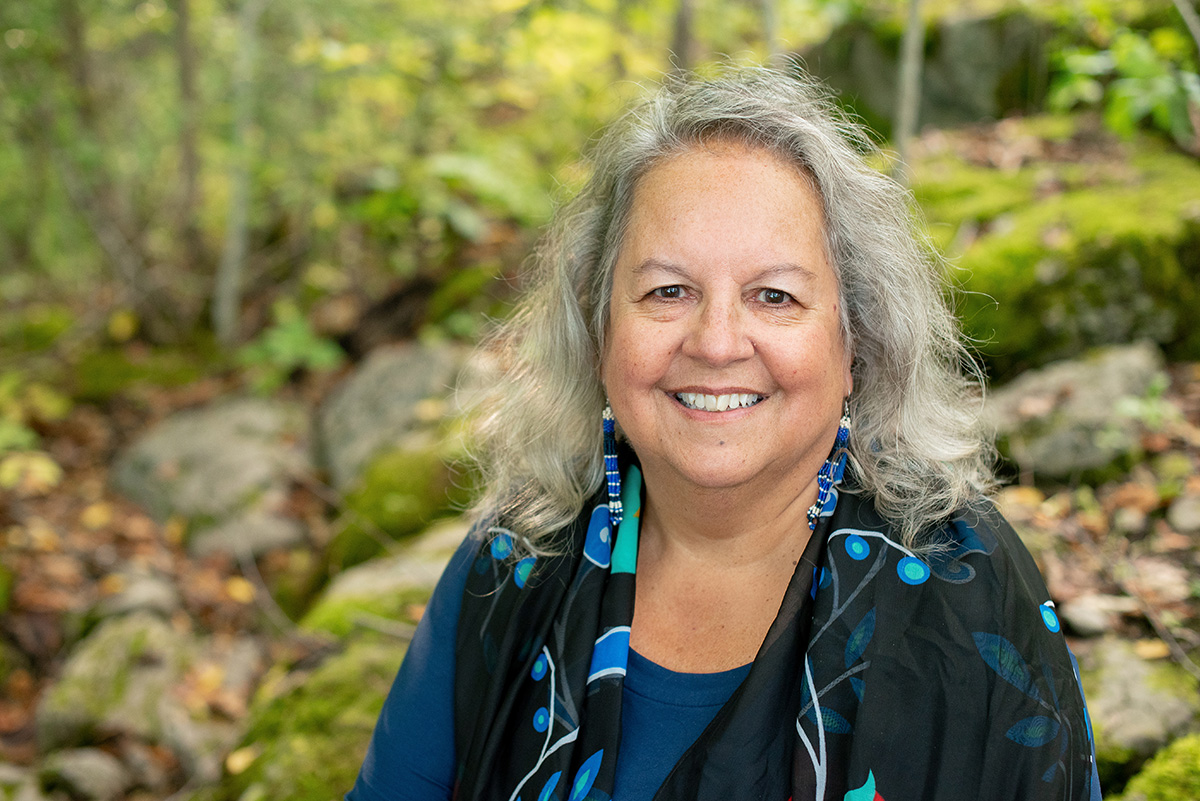
Practical Reverence
In this conversation, Potawatomi botanist Robin Wall Kimmerer speaks about embracing a gift economy, and offers a framework for embodying a practical reverence: an ethic of care, reciprocity, and gratitude for the Earth.

